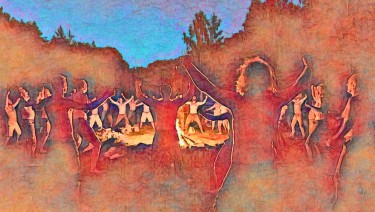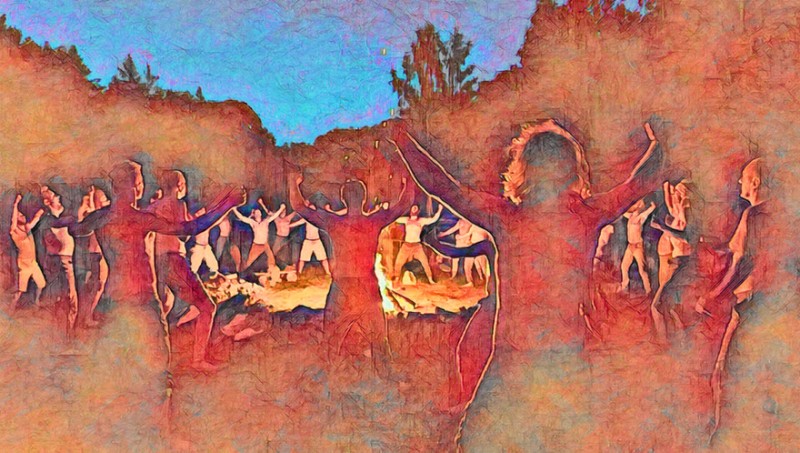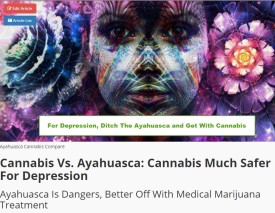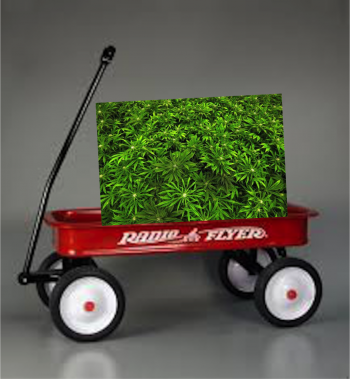
A Canadian Company Develops ‘Medical Grade Ayahuasca’ - Is Commercial Ayahuasca Going To Help Boost Psychedelic Therapy?
People are paying big money to get their hands on ayahuasca.
It costs a hefty amount of money to go on an ayahuasca retreat in many retreat centers around the United States, where you can trip on the ancient entheogenic drug for healing purposes. However, there are also people who are spending thousands of dollars to travel to South America, where the use of ayahuasca originated with local tribes.
The spiritual use of ayahuasca can be traced back to 900BC, when it was used by Peru’s Chavin tribes. During the 16th century, Spanish missionaries stumbled on the indigenous tribes located in the western basin of the Amazon using it for shamanic, ceremonial, and social experiences. Typically, the ayahuasca brew is made out of a mixture of the Banisteriopsis caapi vine together with Psychotria viridis, which is known as chacruna in South American countries. Chacruna contains high amounts of DMT, which can be found in most plants, though the monoamine oxidase inhibitors (MAOI) prevent us from experiencing the psychedelic effects of DMT. However, once mixed with the Banisteriopsis caapi, this enables the DMT to get into our blood and brain, bonding with serotonin receptors, resulting in a grand psychedelic experience.
While South American tribes have been using ayahuasca for centuries, we’ve only just started to peel off its many layers scientifically and medically in the west. It has been found to have tremendous healing properties especially for treatment-resistant depression, anxiety, post-traumatic stress disorder, and more. People are desperate to experience its healing benefits especially for those whom traditional and conventional psychotherapy and drugs don’t work.
However, given that DMT is still technically illegal in the United States, ayahuasca is hard to come by unless you have tons of money to burn. It can also be risky attending retreats by inexperienced and so-called shamans trying to make money – the whole thing can do more harm than good in this case.
There are two basic components in a traditional ayahuasca brew, though there are actually thousands of ways you can make it that involve different ratios of the
So is it possible to standardize ayahuasca into a medical-grade pharmaceutical drug for therapeutic purposes?
A Canadian drug company thinks so.
Ben Lightburn, Chief Executive Officer of Filament Health, explains to The Star. “Drug development is long and expensive,” he says. “A typical drug development course takes five to seven years, at minimum, and we’re only in the very early stages right now,” Lightburn says.
“That said, we’re seeing doors opening slightly for psychedelic therapy that are outside of the traditional medical pharmaceutical prescription model,” he adds.
Filament is working on a medical-grade version of ayahuasca containing standardized, measurable amounts of its active ingredients. Lightburn hopes that this will open the doors for clinical trials on ayahuasca to be conducted, and they are working on FDA-approved trials for 2023.
“We have a hypothesis that the reason ayahuasca might work well for certain indications has to do with the fact that it’s not just DMT, but the combination,” he explains.
How Safe Is Ayahuasca?
Ask just about anyone who’s consumed ayahuasca, and they will tell you that the experience is nothing short of uncomfortable. It works, but one definitely has to go through severe bouts of vomiting and other discomforts. After all, it is a spiritual drug and not a pharmacological one.
A recent study conducted by researchers at the University of Melbourne analyzed the side effects of people who consumed ayahuasca. Dr. Daniel Perkins, who is engaged in numerous studies of psychedelics and medicinal cannabis, also spearheads the Global Ayahuasca Project, which seeks to increase awareness of the brew and its impact on people who do so. For the study, they analyzed data from the Global Ayahuasca Survey, which was conducted online from 2017 through 2019 and answered by 10,836 people from more than 50 nations.
The survey polled individuals on their demographics, education level, mental health history, and ayahuasca experience. They were also asked to detail any side effects they experienced as well as provide information on whether they experienced impacts emotionally or mentally after they participated in ayahuasca ceremonies.
Dr. Perkins and his team excluded responses from people who didn’t complete the adverse effects part of the questionnaire.
They found that acute physical side effects were reported by some 69.9% of the respondents, though the most common, unsurprisingly, were nausea and vomiting followed by headaches and nausea. The researchers confirmed that nausea and vomiting were considered ‘normal’ for ayahuasca users. “In the case of traditional ayahuasca ceremonies and even in non-traditional ceremonies, not only is vomiting/nausea not considered an adverse effect, but it is even sought out for its purging and perceived spiritual cleansing benefits,” they write.
However, they did find that based on responses, the benefits of ayahuasca were much greater than any associated risks.
One of the survey participants even added, “I have had numerous experiences where ayahuasca has brought difficult patterns into my awareness in my daily life, which is never comfortable but always results in growth in the end.”
“This finding, while intriguing, is in accordance with the early age of ayahuasca initiation in traditional contexts, both Indigenous and in ayahuasca churches, where researchers failed to find long-term neuropsychiatric alterations,” write the authors.
Conclusion
For those who are brave enough to go through the temporary physical discomfort, ayahuasca can be life-changing. Being able to standardize its doses and make it more accessible, which we hope can happen in the near future, will improve the lives of thousands of people around the world. Hopefully, Filament Health’s research will come out with positive findings soon.






